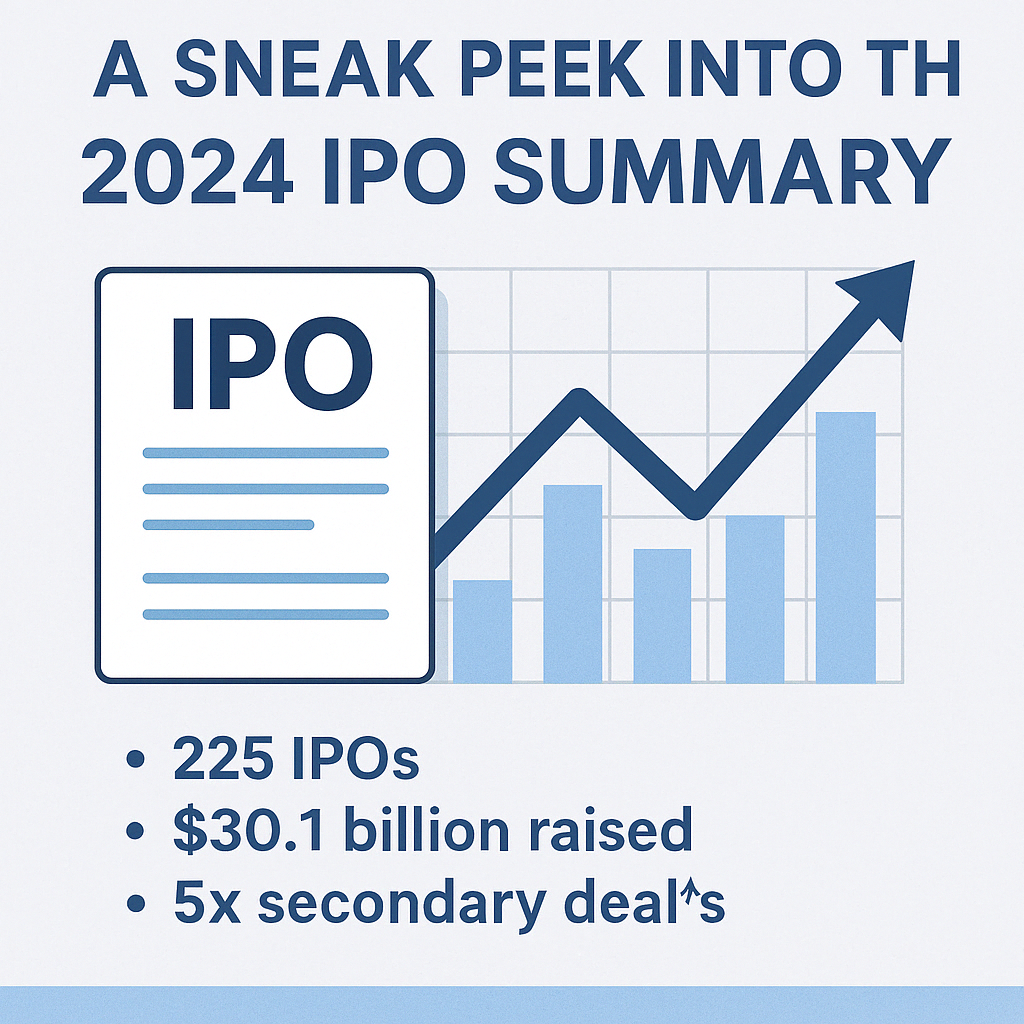For those having investable wealth, there is a wide range of opportunities from which to select, including real assets such as commercial property and an array of financial products, ranging from basic instruments such as stocks and bonds to the now somewhat tainted derivative products such as asset-backed loans. Many commentators believe the market declines of the past two years are over and that there are good opportunities now in both domestic and international stocks. Recent and forthcoming financial reporting developments may facilitate decision making, but only for those who grasp how to read and interpret company financial reports.
Investors in financial assets typically weigh various factors prior to making their respective investment decisions, even when a given industry sector is viewed as being generally attractive. An investor may, for example, have a strong belief in the attractiveness of the consumer staples sector, and think the confectionary business is particularly appealing. How can he or she decide between investing in, say, Hershey, Nestle, or Cadbury? Another investor may anticipate earnings growth in the automobile industry – but should he or she choose to invest in Ford, Toyota, or Volkswagen?
Whether the hypothetical investor leans toward the fundamental or the technical mode of investment analysis, he or she must have a minimum threshold level of understanding about the financial reporting conventions applied by the target investments so that, inter alia, the matter of accounting risk can be factored into his or her investment decisions. There are, of course, many considerations other than accounting which can influence an investment decision, but for purposes of the present discussion it will be assumed that all other concerns remain constant and the investor is choosing his or her investment from among the chocolate or automobile companies mentioned above. What financial reporting considerations must be addressed?
Historically, businesses would prepare and present their respective financial statements in accordance with the accounting principles prescribed for the country where they were domiciled (“national GAAP”), and these varied across jurisdictions for a number of reasons, including the legal system tradition (“code law” vs. “common law”) and historical mode of development (e.g., where financial reporting requirements were an instrument of tax policy or were primarily a tool for investors). over the past 35 years, there has been an increasing awareness of the usefulness of having a uniform system of financial reporting, and the london-based International Accounting Standards Board (IASB, which before 2001 was known as the International Accounting Standards Committee) has been increasingly successful in winning adherents to International Financial Reporting Standards (IFRS, which prior to 2001 were called International Accounting Standards, or IAS). Today, well over 100 nations have replaced or supplemented national GAAP with these uniform standards, or have announced plans to do so, and the major remaining nations, including u.S., India, Australia and Japan, are en route to convergence with those standards within the next few years.
users of financial statements, including current and prospective investors, need to understand how the various reporting regimes differ, so that investees’ financial results and conditions can be validly interpreted from their respective financial reports. IFRS differ in a number of important respects from u.S. and other national GAAP (and u.S. GAAP differs in various ways from other national GAAP, as well). With an ever-widening horizon of international investing opportunities available, prospective investors
will be confronted with the need to understand how reported amounts, such as revenues, net income, long term debt, and total equity) have been computed, in order to make investment decisions based on appropriate comparisons across companies and industries.
For example, under IFRS only the first-in, first-out (FIFo) or weighted average inventory costing is acceptable, but under u.S. GAAP a very different method, last-in, first-out (lIFo), is also permissible. If the costs of raw materials (e.g., sugar, cocoa) are on the rise, it may be possible for the u.S. company using lIFo costing to improve its reportable earnings by partially depleting its inventory, thus expensing of its older, lower-cost inventory of these raw materials. This may be a prudent for operational purposes and need not suggest manipulation of the financial statements per se, but it may nevertheless mask real economic differences when comparing the two companies using disparate inventory costing methods. Thus, Hershey, one of the confectionary industry investments being considered and a uS-based company, uses lIFo inventory costing, whereas Swiss-based Nestle uses FIFo and the weighted-average costing methods. Investors would need to understand how these different costing methods could have impacted comparability (note: there is no suggestion here that Hershey has engaged in such practice, and in fact its inventories declined only modestly from year-end 2007 to the third quarter of 2009; it also hedges fluctuations in commodities prices, moderating the income statement effect of such changes).
Similarly, for the investor interested in the automobile industry segment, it would be important to appreciate the impact on comparisons caused by the fact that Ford uses lIFo costing for about one-fourth of its inventories, with FIFo used for the remainder, whereas Toyota relies primarily on average costing. Due to automobile market conditions, Ford did reduce its inventory level from 2007 to 2008, which did deplete some of its lower-cost goods, thus boosting gross margin and reducing what would have been its reported 2008 pre-tax loss by $209 million, or about 1.4%. This fact is fully disclosed in Ford’s financial statement footnotes, and happens to not be material to an investment decision in this instance. It does illustrate, however, the potential significance of accounting policy decisions, and of allowable choices under alternative financial reporting regimes, to investment analyses.
The foregoing observations regarding inventory costing are merely emblematic of the various accounting differences that may complicate or even thwart efforts to compare investment alternatives, which are increasingly cross-border and no longer limited to domestic competitors. It can thus fairly be observed that the investment evaluation process is facilitated when the same “language” is used to prepare financial reports across various investment options, both domestically and internationally. When this ease of comparability does not exist, cross-border capital flows are naturally made more daunting, with obvious implications for both investors (whose options are accordingly constrained) and for companies seeking to raise capital (whose sources are limited, with deleterious consequences for their cost of capital).
Although even within a given financial reporting regime (e.g., that in the u.S.) various alternative practices (e.g., inventory costing methods) may be allowed, complications are multiplied if different sets of accounting requirements are employed. With many, if not most, major international companies based outside the u.S. having adopted, or in the planning stages to adopt, IFRS, investors, and their financial advisors, urgently need to become familiar with IFRS in order to make these informed choices. Doing so can only serve to widen the investment horizons of even mainstream, individual investors.
IFRS Will Facilitate Financial Advisors’ and Investors’ Analyses of Investment Options
There are two distinct analysis perspectives that are commonly applied in considering investments. The first employs a fundamental analysis of the financial health of the company and the expectations for its future growth, while the second relies upon a valuation of the price for which that stock can be purchased. Thus, one could have a great company whose stock price is simply too expensive to justify purchase, and conversely one might identify a company whose business is inherently less
attractive, but whose stock is so inexpensive that it becomes a compelling investment. Inconsistencies in accounting only serve to muddy the analytical waters in performing either mode of evaluation.
At present, publicly-traded entities in the u.S. employ u.S. Generally Accepted Accounting Principles (u.S. GAAP) standards for financial reporting, and many other nations have alternative versions of their own national GAAP or, increasingly, prescribe use of IFRS. Financial advisors making recommendations, and investors making decisions, will review the target investee’s basic financial statements to help them determine if a company has a sound business, and will make comparative evaluations to determine whether or not a particular stock appears to be a relatively good investment versus alternatives within or outside its industry grouping.
Within each country there is a single set of financial reporting standards for publicly-traded entities. Consequently, accounting analyses can be standardized for domestic portfolios. This ease of making comparisons has not held for investees domiciled in different nations, using differing sets of financial reporting standards. This has been a significant impediment to cross-border investing, thus limiting the pools of capital to be accessed by businesses and likewise limiting investments easily made by those holding investable resources. As a universal language of financial reporting comes closer to reality, this will change dramatically. Aware investors and financial advisors would be well served to gain an appreciation for the impact such a change would have on portfolio analysis.
IFRS Will Be Beneficial When Uniformly Enforced and Applied
At the outset of the convergence project, many (mainly in the u.S.) expressed the concern that IFRS were not of the same quality as u.S. GAAP. To alleviate such concerns, the former IASC evolved into IASB in 2001, adopting a structure and “due process” essentially identical to that of the u.S. Financial Accounting Standards Board (FASB) – albeit without the funding advantage that Sarbanes-oxley bestowed upon FASB – all to ensure that development of IFRS would be given the level of attention necessary to ensure high quality results. It has now been accepted that IASB has greatly improved the quality of existing standards, and has closely cooperated with FASB in jointly developing several important new standards (such as that for the application of the purchase [now, acquisition] method of accounting for business combinations).
In an informal survey of three respected portfolio managers, conducted by one of the authors, two responded that there is currently little perceived difference between the two sets of standards, and that this is truer every day. The third, however, felt that there is still a huge gulf between the quality of the international standards and u.S. standards. In the authors’ view, however, this manager’s apparent misperception may have been more a reflection of the enforcement differences between the u.S. and other countries than differences in the standards themselves, which by any objective evaluation are limited as to scope and nature.
There have been no definitive studies suggesting that u.S. GAAP is superior to IFRS, but there have been studies (in addition to naïve logic) to support the notion that uniformity of accounting standards across entities does reduce perceived accounting risk. Assuming that application of IFRS by reporting entities faithfully follows the requirements of the standards – which is the responsibility of auditors and securities regulators – adoption of IFRS-based reporting should lubricate the machinery of international commerce and investing.
IFRS and U.S. GAAP Will Continue to Be Converged
The IASB and the FASB have been working diligently since 2002 to converge their respective sets of standards, but work remains undone. According to a report published by Big Four accounting firm PricewaterhouseCoopers in october, 2007, as of that date there were 31 differences in accounting requirements between IFRS and GAAP. Some of the differences are minor in nature, but nonetheless lessen investor confidence in making investment decisions and create the aura of “accounting risk.” other differences between the standards are major. For example, long-lived assets (such as plant and equipment, patents, and investment property like buildings held for rental purposes) can be revalued under IFRS but not under u.S. GAAP; development costs are capitalized under IFRS but mostly expensed immediately under u.S. GAAP; and lIFo inventory costing is prohibited under IFRS but quite popular under u.S. GAAP.
Although many advisors are fully conversant with the distinctions among different financial reporting regimes and the effects of using alternative accounting methods that may be optionally available within a given regime, during a recent interview with one money manager, it became apparent that she was not aware of the lIFo v. FIFo accounting incongruity. While some differences in accounting practice may not create a major change in the interpretation of financial results, any lack of awareness of the differences will contribute to the component of risk commonly referred to as accounting risk, which creates a reluctance to invest,thusraisingthecostofcapitalforentitiesattemptingtotapaconstrainedpoolofinvestmentcapital. Advisors,investors and portfolio managers will have a clear advantage if they understand the implications that the accounting changes will have on portfolio analysis for both domestic and foreign stock recommendations.
IFRS Will Improve Transparency
Accounting risk can be further analyzed as the product of several possible underlying phenomena. one aspect arises from the inability of users to process the information. If measurements and disclosures are of such complexity that the hypothetical “typical” investor cannot digest this information, upon which to base logical decisions, they will perceive greater risk and, accordingly, should demand higher expected returns – which is another way of saying the reporting entity will have higher cost of capital imposed on it. Arguably, a move towards more transparent and uniformly applied international accounting standards can help mitigate this aspect of accounting risk.
The currently in vogue buzzword in financial reporting, transparency, means the user can “see through” the financial statements to the underlying economic substance of the reporting entity – its financial position and results of operations, in particular. As experience in both the u.S. and elsewhere has shown, some financial statement preparers will be motivated to defer or disguise the recognition of losses, with obvious misleading implications for decision making by investors. Holding aside outright financial reporting fraud, it is known that national GAAP in “code law” countries more frequently abetted loss of transparency, due to legally imposed requirements such as mandatory statutory reserves, even under “common law” national GAAP, opacity in financial reporting has been widely cited.
The universal adoption of IFRS should reduce the complexity of financial statements and enhance transparency. In part, this would result from the reduced range of acceptable options in accounting for given transactions under IFRS. This would assist not only the ultimate users of the financial statements, but also the independent auditors, who will more easily validate the client company’s accounting treatments. Financial statements will then more unambiguously report on economic substance and the reality of the company and its transactions, while eliminating some of the current opportunities for obfuscation.
Uniform Application of IFRS Will Benefit Financial Advisors and Investors
of course, accounting risk is not the only risk that international investors face. There are many other risks, including geopolitical risk, currency risk, business risk, central bank or interest rate risk, market risk, management risk, legal risk, financial risk, auditing risk, and even enforcement risk. All of these risks can be evaluated (to some extent, at least), and some of these risks (currency, interest rate) can even be hedged. The good news about accounting risk is that there is the potential for it to be virtually eliminated in the near future. Convergence of accounting standards (or outright adoption of IFRS) would accomplish this.
Investors would still be faced with auditing risk and enforcement risk (e.g., as auditors and their regulatory overseers struggle to master new accounting rules, and as differing nations continue to unevenly police the accounting practices of reporting companies), as well as the other aforementioned risks, but the near-elimination of accounting risk would be a major step forward.
Investors and their advisors would certainly be well served by expanded cooperation among nations to create an international policing body that would assist local efforts. The creation of many other international cooperative entities is a precedent for the construction of such a body. As standards move toward ultimate convergence, or as IFRS becomes the lingua franca of international financial reporting, it becomes more urgent that local authorities should develop or impose similarly uniform, and consistently enforced, auditing procedures.
Adopting IFRS Can Improve an Entity’s Image
It is true that, during the recent financial crisis, the high correlation of international investment and even fixed income instruments led to massive losses across every portfolio, with the exception of the u.S. Treasury or gold allocations. This so- called “black swan” event proved damaging to nearly every holding. More commonly, however, international diversification has proved to be valuable in improving performance. Investors’ willingness to engage in international diversification is, in turn, dependent on reducing accounting risk, which the universal adherence to uniform accounting standards would help to substantially achieve.
International investing and portfolio diversification would benefit from the adoption of a single set of rules. Just as lowering the cost of capital for enterprises is a benefit for investors, so also is international diversification a benefit for them. Combining different investments with good rates of return and whose results are not correlated – or are even negatively correlated – assists in the search for the “efficient frontier” of portfolios, which is the holy grail of higher return with lower overall risk.
Research suggests that firms that voluntarily adopt IFRS early are viewed as being committed to high-quality, transparent financial reporting, with salubrious effects on market enthusiasm for their securities – benefits also obtained by foreign registrants in the u.S., which are rewarded for subjecting themselves to (presumed) closer regulatory scrutiny. A range of other academic research tends to corroborate the expectation that IFRS adoption signals the markets that the reporting entities intend to adhere to quality financial reporting practices.*
Some investment firms are now touting strategies for investing that have a perceived advantage of being “borderless.” Investors typically seek companies with good earnings growth, attractive valuations, or both. These factors may vary in relative importance, depending on whether the investor is a “value,” “growth,” or “core” investor. By and large, every investor and every investment style is dependent upon obtaining and understanding accounting data in order to calculate earnings, estimate earnings growth, and pinpoint valuation measures.
Final Thoughts
Investors and their advisors would be ahead of the game if they were aware of both the pending adoption of IFRS and the implications it has for the stocks they or their portfolio managers hold. While some advisors may be less aware of the magnitude that these accounting changes have on stock analysis those in the know will have a distinct advantage over those that do not. Although it is the stock analyst that is most directly affected by the change, an advisor who is aware of the new rules may avoid mistakes and find opportunities. For example, if an analyst alters his or her earnings estimate downward on a stock solely because of the accounting change, some advisors or investors may be misled into thinking that the company is encountering
actual difficulties and may sell the stock prematurely. Selling pressure could create an opportunity to buy the stock cheaply for the more-aware advisor’s clients. This advisor may also avoid buying a stock based on a one time upward earnings estimate revision due solely to an accounting change that would not represent a real uptick in revenues and profits. Clearly, those advisors in the vanguard will better serve their clients’ interests.
* These studies have been synopsized in Barry Jay epstein, “The economic effects of IFRS Adoption: Investigating the expected Benefits,” The CPA Journal, (New York Society of CPAs: March 2009).
About The Author(s): Barry Jay epstein, Ph.D., CPA, is a partner at Russell Novak & Company llP (www.RNCo.com), and co- author of Wiley IFRS 2010, Wiley IFRS 2009, and the forthcoming Wiley IFRS for SMes, among other books. He is also a consulting expert on GAAP, auditing standards and financial reporting matters. lawrence G. (“larry”) Macy, CFP, is a First Vice President and Wealth Management Advisor in the Chicago office of Merrill lynch (www.fa.ml.com/m_m_group) with over 20 years of experience in delivering innovative financial solutions for individual client needs. elaine Vullmahn, CPA, CIA (Russell Novak & Company, llP) also assisted with this article.
Related Posts
🎅🎄 Merry Christmas! 🎄🎅
Wishing you all the joy, peace, and love this festive season brings. ✨ #Christmas #paulwanco…
✨ Happy Deepavali! ✨
Wishing you and your loved ones a joyous and prosperous festival of lights! May this…
Paul Wan & Co Group Bonding Event Da Nang 2024
Paul Wan & Co group celebrated our 38th anniversary with a big bang retreat in…
🌕✨ Happy Mid-Autumn Festival ! 🎑🐇
As the full moon shines bright, we send our warmest wishes to our valued clients,…













